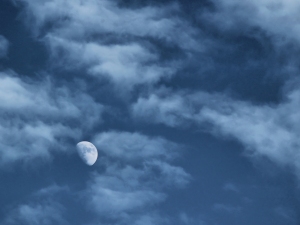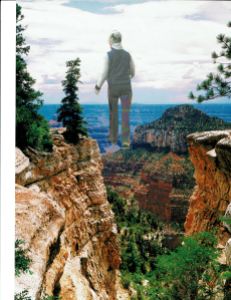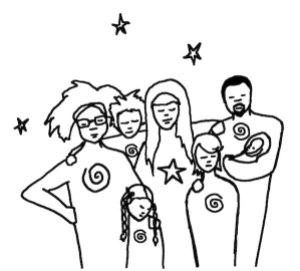The US just bombed Syria. The latest in a long string of military strikes using violence to fight violence to bring “justice.” We keep trying the same solution seeking a different result.
No wonder I kept crawling back into bed yesterday. I am in grief about the latest actions of the homeland I love.
I don’t yet know the rest of the hidden story about circumstances that led to this attack on Syria, but I can’t help noticing that the US has angered Russia at the very moment our current administration is under investigation about Russian involvement in our presidential election. If my hunch turns out to be correct, it wouldn’t be the first time that a US President turned to war to distract us from a problem here at home. Bill Clinton and LB Johnson come to mind.
Sometimes we step into military action based on lies. Vietnam, for example. While running for office on a platform of being aggressive and restrained at the same time, Johnson needed a national security risk to justify military action in Vietnam. This risk came in the form of unprovoked North Vietnamese PT boat attacks on two US ships.
In response, Johnson said, “Yet our response, for the present, will be limited and fitting. We Americans know, although others appear to forget, the risks of spreading conflict. We still seek no wider war…but it is my considered conviction, shared throughout your Government, that firmness in the right is indispensable today for peace; that firmness will always be measured. Its mission is peace.”¹
It turned out, however, that the first attack was provoked. Johnson admitted privately that we had been carrying out “some covert operations in that area” like “blowing up some bridges and things of that kind, roads, so forth. So I imagine they wanted to put a stop to it.”² The second attack, however, the one used to justify a US military response, never happened. It was completely fabricated.
Then we had the Iraq War of 2003. The truth was obvious to many prior to our invasion, and the facts have since become public.
Cuba was a different issue. The US almost stepped into a nuclear war during the 1962 Cuban Missile Crisis. Russia, a Cuban ally, tried to secretly deploy nuclear weapons to Cuba. Horrified that nuclear weapons were so close to US shores, Kennedy’s secret White House audio tape recorded him saying, “It’s just as if we suddenly began to put a major number of MRBMs [Medium Range Ballistic Missiles] in Turkey. Now that’d be goddam dangerous.”³ Problem was, that was exactly what we had done, despite prior assurances to Russia that we would not install missiles in next to their borders. Both US and Russia’s actions were dangerous.
There is more to the story of many US wars than reached our press—North Korea, Russia, Iran, Iraq, Afghanistan. In addition to military action, we’ve also played a role in helping to topple democratically elected presidents in Iran, Belgian Congo and Guatemala. And don’t forget our land theft through lies and war with the Indigenous Native American People.
We Americans have steadfastly been unwilling to look at the shadow side of our nation’s history. We cling for dear life to the pure image of the US as a beacon for democracy seeking justice for everyone. There is some truth in that image, but our actions fall short of our vision.
The more we prop up the image of a blameless US, the more we continue to project our evil onto other countries.
There is another option. Ironically, addressing these international crises must begin with me. And you.
I’ve always known that there was a direct relationship between the personal and the global. We can’t fight against war between nations when a war rages within us. Personal wars spill out in disrespectful and arrogant behavior with people in our homes, with other drivers on our roads, within our communities. Fighting violence with violence, popular as it is, will only lead to more violence.
This is not a time where we can lazily believe the “official American story.” I uncovered the truth hidden in the version of history I’d learned in school when writing Big Topics at Midnight: A Texas Girl Wakes Up to Race, Class Gender and Herself. Getting accurate information wasn’t difficult, and didn’t require too much digging. I learned a bit more history this week reading Dorothie and Martin Hellman’s A New Map for Relationships: Creating True Love At Home & Peace On The Planet. Most of the examples and quotes in this blog are from the Hellmans’ book, but this information is easily found elsewhere. We just have to be willing to see.
“Let there be peace on Earth, and let it begin with me,” may sound like a flaky sentiment too weak to resolve global conflicts. And it is, if we think finding peace within ourselves and our communities is about thinking sweet thoughts and being nice. The open-hearted, compassionate but fierce love required to honestly look at ALL of ourselves—the beauty and gifts as well as the narrow-minded and short-sighted assumptions—can pave the way for us to wake up and realign with our personal and national vision. For us as individuals. For communities. And for all of creation.
Grief must be part of the process. Grief right in the middle of our grief-phobic culture. We’ve tried to step over heart-wrenching experiences, both personally and nationally. This turning away from grief has resulted in stunted living, rendering us unable to appreciate the exquisite gift of life itself and unable to honestly look at those parts of our behavior that are in direct conflict with our values. Climbing back into bed again and again today was part of honoring my grief. Getting out of bed at 3 a.m. and writing my way through this week’s news was my next step. I am listening for whatever mix of grief and action that comes next for me.
I’ve seen how communities change when one person takes the risk to behave honorably and honestly. I know it is possible for a small group of people to bring about huge, global shifts. I believe that grace steps in powerfully in response to a transformed heart. The ripples spread from individuals to people around the globe.
I also know the inspiring vision at the heart of this country, and the beautiful global diversity of Americans. My wail is a love cry to my people and my nation. It is time to hold the full paradox that is us, and step into the fullness of our Vision.
1. Dorothie and Martin Hellman, A New Map For Relationships: Creating True Love at Home & Peace On the Planet, New Map Publishing, 2016, page 183. The transcript of President Johnson’s August 4, 1964 television address is accessible online.
2. Hellman and Hellman, page 179. From Michael R. Beschloss, Taking Charge: The Johnson White House Tapes, 1963-64, page 493-494.f I first learned about this through Jim Stockdale’s first-hand account of that night on the US Maddox in his memoir In Love and War.
3. Hellman and Hellman, page 237-238. From Sheldon M Stern’s The Week the World Stood Still: Inside the Secret Cuban Missile Crisis, page50
 It’s been quite a summer. A wedding. A Be Present Black & Female National Conference where I was part of a diverse group of facilitators. A gathering with two organizations looking at “Money and the New Community.” And a Wisdom & Money Board meeting. All as my little grandson Daniel keeps growing cuter by the moment.
It’s been quite a summer. A wedding. A Be Present Black & Female National Conference where I was part of a diverse group of facilitators. A gathering with two organizations looking at “Money and the New Community.” And a Wisdom & Money Board meeting. All as my little grandson Daniel keeps growing cuter by the moment.









